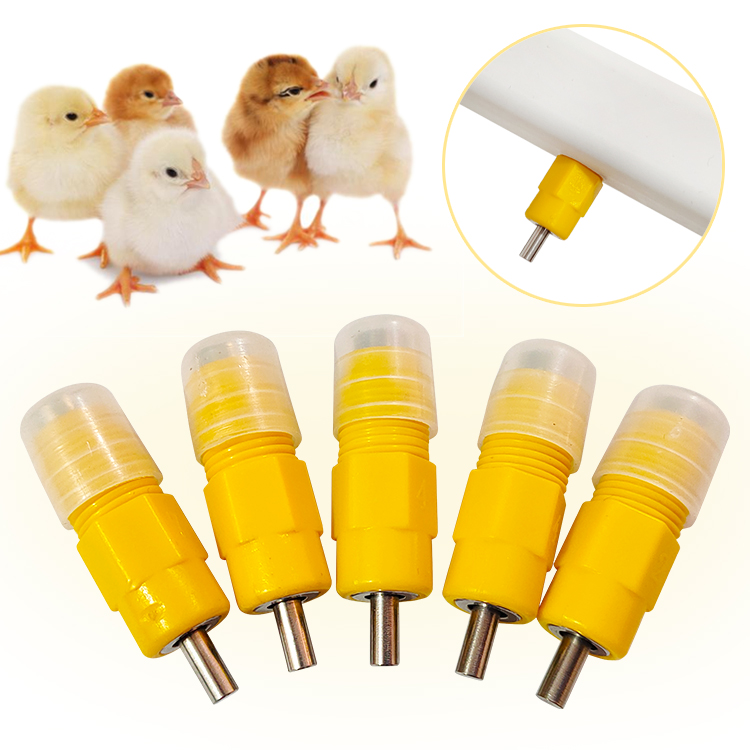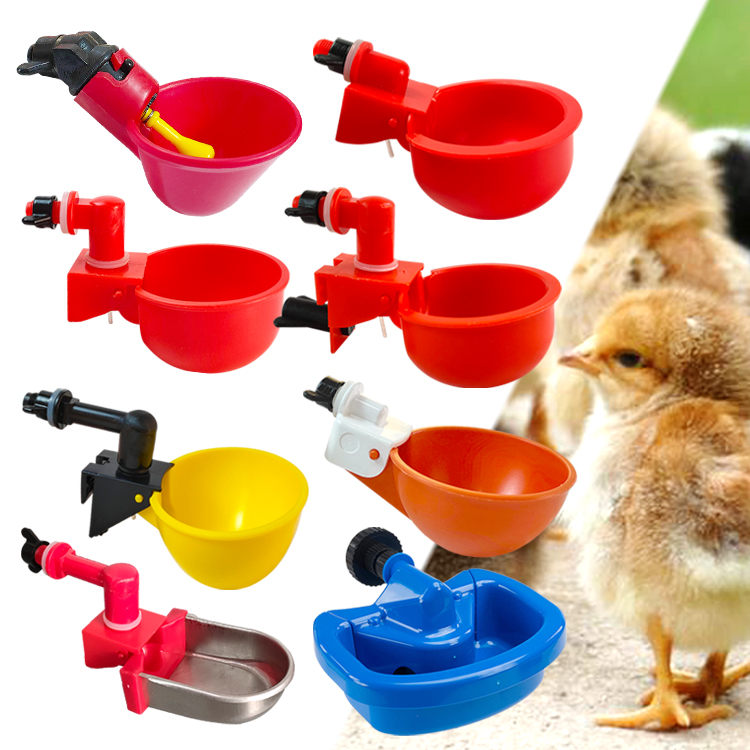News
Malaysia
The livestock industry in Malaysia mainly includes the processing of chickens, eggs, pigs, cattle, sheep, and dairy products, accounting for an average of 0.7% of the gross national product (GDP) and an average of 8% of the total agricultural output. In recent years, the average annual demand for meat, eggs, and milk in Malaysia is 2.46 million tons. Among them, the self-sufficiency rate of pork, chicken, and eggs exceeds 100%. Most of the beef, mutton, milk, and dairy products need to be imported from abroad. Chicken farming is the mainstream of Malaysia's livestock industry, accounting for 55.7% of the total livestock production. There are more than 3,000 chicken farms and slaughterhouses in the country, 90% of which are concentrated in West Malaysia. In recent years, the average annual demand for broiler chickens in Malaysia is 650,000 tons, the production volume is 750,000 tons, and the self-sufficiency rate is 115%; the annual demand for eggs is 390,000 tons, and the production volume is about 410,000 tons, with a self-sufficiency rate of 105%. %. The supply of broilers and eggs exceeds the demand, and a small amount is exported to Singapore and New Zealand. The pig industry in Malaysia accounts for 21.1% of the total livestock production, mainly in the Sarawak state in West Malaysia and East Malaysia, with an average annual breeding population of 1.9 million. The average annual output and demand for pork are about 160,000 tons, and the self-sufficiency rate is 100%. To adjust the surplus and shortage, Malaysia also imports pork for about US$500,000 from Australia, India, and other countries every year.
From 1999 to 2001 and 2003, the number of cattle in herd was 727,000 and 750,000, respectively; 147,000 and 140,000 of water buffalo; 1,912,000 and 1,700,000 of pigs; 146,000 and 11,000 of sheep, respectively 239,000 and 245,000 goats; 142,000,000 and 183,000,000 poultry; 954,000 and 1.074 million tons of meat, including 16,000 and 20,000 tons of beef; pork 162,000 tons and 233,000 tons respectively; poultry meat was 771,000 tons and 816,000 tons respectively; eggs were 408,000 tons and 489,000 tons respectively; dairy animals remained at 85,000 heads, and the yield per unit was 367 kg and 463,000 tons respectively. kg, milk production is 31,000 tons and 38,000 tons.
the Philippines
From 1999 to 2001 and 2003, the number of horses was 230,000 and 230,000, respectively; the number of cattle was 2,467,000 and 2,557,000, respectively; the number of water buffalo was 3,032,000 and 3,180,000, respectively; The number of livestock on hand was 10.724 million and 12.364 million respectively, the number of goats was 6.189 million and 6.30 million respectively; the number of poultry was 12,700 and 14,100 respectively; the total output of meat was 1.882 million and 1.882 million tons respectively. 2,348,000 tons, including 188,000 tons and 181,000 tons of beef; 1,015,000 tons and 1,385,000 tons of pork; 561,000 tons and 659,000 tons of poultry meat; 515,000 tons and 575,000 tons of eggs respectively. ; The number of dairy animals is 4,000 and 5,000, and the milk production is 10,000 tons and 11,000 tons respectively.
Thailand
From 1999 to 2001 and 2003, there were 4.666 million and 5.048 million head of cattle; 1.716 million head and 1.8 million head of water buffalo; 6.539 million head and 7.059 million head of pigs; 249,000 head and 197,000 head of various poultry respectively Only. Among them, breeding pigs, beef cattle, and breeding cattle are mainly concentrated in the north, and laying hens, broilers, ducks, meat ducks, meat pigs, and dairy cows are mainly concentrated in the middle. Feed is mainly produced locally, supplemented by imported raw materials. From 1999 to 2001 and 2003, Thailand's total meat output was 2.198 million tons and 2.207 million tons respectively, of which beef was 170,000 tons and 220,000 tons; the pork was 520,000 tons and 642,000 tons; poultry meat was 1.237 million tons, respectively. And 1.291 million tons; eggs were 795,000 tons and 804,000 tons; dairy animals were 204,000 and 240,000 heads, and milk production was 516,000 tons and 620,000 tons.
In 1985, the Animal Husbandry Department of the Ministry of Agriculture and Cooperatives of Thailand introduced Meishan breeding pigs from China, which are now distributed throughout Thailand; in 1999, the Chinese government presented Jinhua breeding pigs to the Queen of Thailand, and they are now successfully bred in Thailand; in 2000, the Chinese government presented them to the Queen of Thailand again. Yunnan Yiliang duck breeds are well received by all parties in Thailand.
Vietnam
Vietnam is an agricultural country, and animal husbandry plays an important role in agricultural production. In recent years, with the continuous development of Vietnam's economy, the livestock (poultry) industry and dairy industry have developed rapidly to meet the requirements of the continuous improvement of the living standards of urban and rural people. Vietnam is a friendly neighbor of China, and the two countries have frequent economic and trade exchanges. In 2003, the bilateral trade volume reached 4.8 billion US dollars and will strive to reach 100 billion US dollars by 2010. The establishment of the China-ASEAN Free Trade Area, Vietnam, as one of the ASEAN member states, is an excellent springboard for Chinese products to enter the Southeast Asian market.
Since the 1990s, especially after 2000, with the rapid development of the feed industry, Vietnam's feed production has also developed rapidly. At present, there are nearly 300 domestic and foreign-funded enterprises engaged in feed production in Vietnam, with a total output of 2.8 million tons per year. The Vietnamese government attaches great importance to the development of the breeding industry and encourages foreign investment in the breeding industry and feed processing and production. With the continuous development of the feed market, the Vietnamese market still has huge room for development.
From 1999 to 2001 and 2003, the number of horses was 130,000 and 111,000, respectively; the number of cattle was 4.03 million and 4.394 million; the number of buffalo was 2.887 million and 2.835 million; the number of pigs was 20.293 million, respectively 10,000 and 24,885,000; the number of goats in stock was 529,000 and 780,000; the stock of various types of poultry was 197 million and 254 million, respectively. From 1999 to 2001 and 2003, Vietnam's total meat output was 1.982 million tons and 2.487 million tons, of which beef output was 93,000 tons and 108,000 tons respectively; pork output was 1.414 million tons and 1.8 million tons; poultry meat was 35.9 tons. 10,000 tons and 456,000 tons.
Although the whole country of Vietnam was seriously affected by the avian influenza epidemic in 2005, the poultry breeding industry was hit hard, and the output of poultry eggs dropped by 7.08%, but the overall production situation of animal husbandry is still good, and the proportion of animal husbandry in agriculture has reached 22.5%. The number of cattle, pigs, and sheep has increased significantly. By the end of 2005, the number of pigs in the herd reached 27.43 million, a year-on-year increase of 4.9%. The number of cattle on hand reached 8.42 million, an increase of 12.9%, of which 110,000 cows were on hand, exceeding the national target of 100,000 in 2005. The number of sheep in the herd reached 1.314 million, a year-on-year increase of 28.82%.
In 2005, the total number of beekeeping in Vietnam was over 700,000 boxes, producing 14,000 tons of honey. In the whole year 2005, the output of fresh meat in Vietnam reached 2.29 million tons, a year-on-year increase of 13.7%. Among them, beef output reached 201,900 tons, a year-on-year increase of 22%; pork production reached 2.81 million tons, a year-on-year increase of 12.2%; milk output reached 198,000 tons, a year-on-year increase of 31%.
In terms of the dairy industry, the Vietnamese government has set a goal of producing 300,000 tons of fresh milk by 2010, which is twice the current output to meet the needs of 40% of the population. The setting of this target leaves Vietnamese milk producers facing a severe shortage of local raw material supplies. An obvious example is the Vietnam Milk United Joint Stock Company, the largest milk producer in Vietnam with eight processing plants, which is forced to import 80 percent of the raw materials it needs every year, including fresh milk, formula, and vegetable oils. Vietnamese milk relies on imports, resulting in high production costs. Since 2001, Vietnam has imported more than 10,000 dairy cows. In addition to high import prices, these cows also need some time to adapt to Vietnam's climate. Therefore, the dairy industry adopts breeding methods for cross-bred cows to adapt to the local climate. Nearly 80% of Vietnam's dairy cows are hybrid breeds. Currently, there are 100,000 dairy cows in Vietnam, with an annual output of 150,000 tons of milk. Based on this assumption, there is a huge market for dairy farming and dairy products in Vietnam.

Pulished on Dec. 04, 2025

Pulished on Sep. 05, 2025